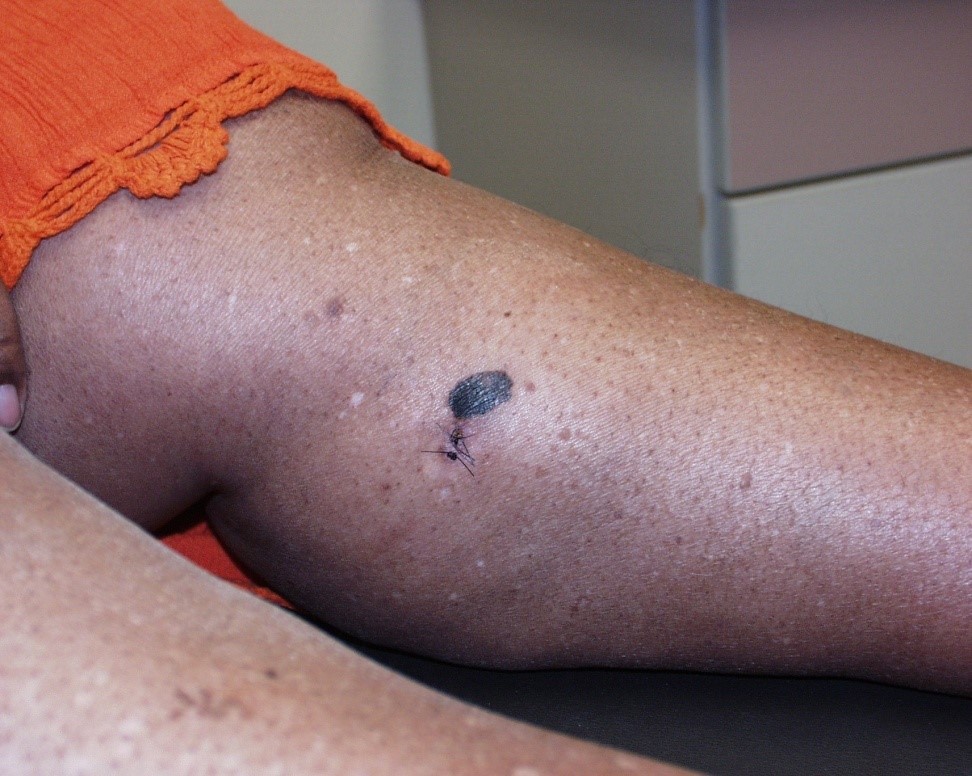By Daniela Morosini SWELLNESS JUNE 11, 2021
Skin cancer is the most common cancer in the U.S. and worldwide, and it’s only becoming more so. The Skin Cancer Foundation estimates that the number of diagnosed new melanoma cases will increase by almost 6 percent in 2021. Even worse, many more cases will go undetected — especially in people with darker skin tones.
“In dermatology training or residency training, we just don’t see enough textbook examples of skin of color,” says Manhattan-based dermatologist Dr. Natalie Moulton-Levy. A 2018 study of medical textbooks found that only 4.5 percent of the images featured in four major textbooks featured darker skin tones.
Notably, the risk of developing melanoma is lower in people of color than it is for those with lighter skin tones. But it is more likely to be fatal when it does occur, usually because it goes undetected until it is too late to treat. (When melanomas are detected early, the five-year survival rate is high — about 99 percent.) What’s more, people of color are more likely to develop acral melanoma, which forms in places that are not typically exposed to the sun (under finger and toenails, on the soles of feet) and can be hard to find if you’re not looking for it. Read HERE.

The skin cancer that killed reggae legend Bob Marley, (melanoma) is less common but also more deadly, especially in African-Americans. About 52% of African-Americans and 26% of Hispanics find out they have it when it has already spread, compared with16% of white people. “By that time, the survival rate is usually much worse,” says Brian Johnson, MD, a dermatologic surgeon in Norfolk, VA, and a spokesman for the Skin Cancer Foundation.
Jacqueline Smith was shocked when she received a stage III melanoma diagnosis at the young age of 21. As a black woman, she didn’t think it could happen to her. “Growing up, I learned that middle-aged, fair-skinned Caucasian women were at high risk for skin cancer,” Smith tells SELF. Smith, now 39, is a melanoma awareness advocate and public speaker who devotes much of her time to spreading knowledge of skin cancer risks, especially to other black women who may underestimate their chances of developing this potentially deadly disease.
Black people are actually more susceptible to the least common subtype of the disease, known as acral lentiginous melanoma. This kind of melanoma shows up in unexpected places, like the palms of the hands, soles of the feet, and under the nails. This unexpected presentation causes it to fly under the radar, which is one reason why black people are more likely to be diagnosed with skin cancer at a later stage. Another reason: the damaging myths about black people being exempt from skin cancer.There’s a dangerous, pervasive, and categorically inaccurate idea that melanin offers sufficient protection from the sun’s harmful UV rays.
Until she received her diagnosis, Smith says she believed that since she had dark skin, she didn’t need to protect herself from the sun. “I hear all too often that melanin is our natural sunscreen,” she says. She’s far from alone; a 2015 study in the Journal of the American Academy of Dermatology found that non-Hispanic black women were significantly less likely to regularly protect their face or other exposed areas with sunscreen than non-Hispanic white women. Overall, sunscreen use was lowest in people whose skin didn’t tend to burn. But your skin doesn’t need to actually burn in order for you to have skin damage—even a slight tan after sun exposure is a sign your skin has been injured, according to the Centers for Disease Control and Prevention (CDC). Read HERE.